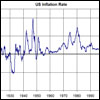In this unit of the course, we provide an introduction to a number of more advanced topics in microeconomics that round out our basic understanding of the economy, and are relevant in more advanced study and research. First, you will be provided with an overview of firm operation in factor markets. Next, you will learn about how consumers incorporate uncertainty into their decision-making. You will also be introduced to the analysis of international trade and capital markets.

|
Image courtesy of Remko Tanis on Flickr. |
|
|
Image courtesy of ntknicole on Flickr. |
|
|
Image courtesy of Tom Morris on Flickr. |
|
|
This image is in the public domain. Source: Wikipedia. |
|
|
Image courtesy of B3OK on Flickr. |














